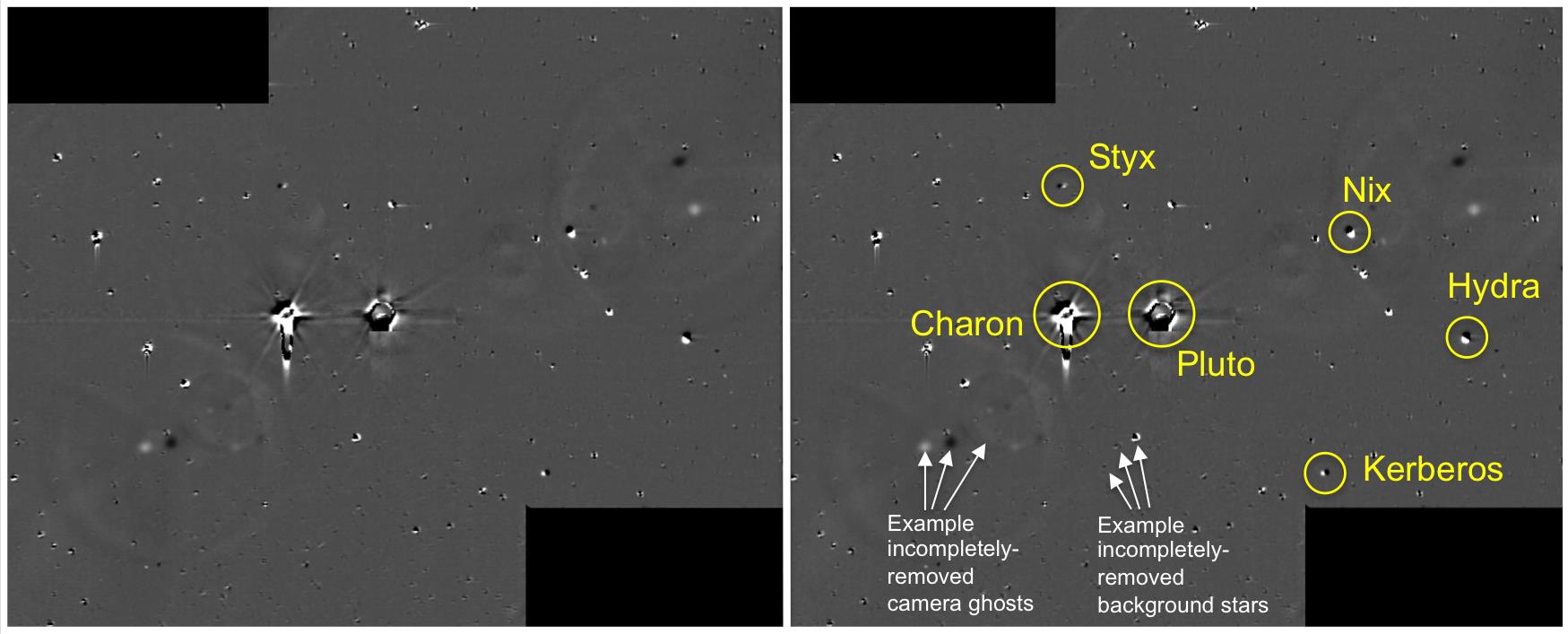
The coast looks clear for a NASA spacecraft's historic Pluto flyby less than two weeks from now.
The New Horizons probe has spotted no signs of rings or additional moons in the Pluto system, so the spacecraft will remain on its original trajectory when it zooms past the dwarf planet on July 14, NASA officials announced Wednesday (July 2).
"Not finding new moons or rings present is a bit of a scientific surprise to most of us," New Horizons principal investigator Alan Stern, of the Southwest Research Institute in Boulder, Colorado, said in a statement. [Photos of Pluto and Its Moons]
"But as a result, no engine burn is needed to steer clear of potential hazards," Stern added. "We presented these data to NASA for review and received approval to proceed on course and plan. We are 'go' for the best of our planned Pluto encounter trajectories."
Pluto has five known moons: Charon (the innermost), Styx, Nix, Kerberos and Hydra. With a diameter of about 750 miles (1,200 kilometers), Charon is half as wide as the dwarf planet itself; the other four satellites are tiny.
New Horizons is barreling along at about 30,800 mph (49,600 km/h) — so fast that a collision with a piece of debris as small as a grain of rice could be fatal (even though the spacecraft is outfitted with a "bulletproof vest").
New Horizons therefore began hunting for undiscovered moons (which could theoretically shed debris into the probe's path after meteorite strikes) and rings with its long-range camera about seven weeks ago. The latest images, captured between June 22 and June 26, revealed nothing of concern, so mission team members gave the probe clearance to remain on its original track, which will take New Horizons within 7,800 miles (12,500 km) of Pluto's surface.
Get the Space.com Newsletter
Breaking space news, the latest updates on rocket launches, skywatching events and more!
"We’re breathing a collective sigh of relief knowing that the way appears to be clear,” Jim Green, director of NASA's Planetary Science division, said in the same statement. "The science payoff will be richer as we gather data from the optimal flight path, as opposed to having to conduct observations from one of the backup trajectories."
New Horizons' handlers had drawn up three alternate trajectories they could have used if the original one ended up being too risky. The deadline for performing the engine burn required to steer the spacecraft onto one of these backup paths is July 4.
New Horizons' operators have another protective tactic at their disposal as well: They can rotate the probe's high-gain antenna forward, using it like a shield. But this maneuver would negatively affect the mission's science return, so team members won't employ it unless they feel it's absolutely necessary.
The hazard search was sensitive enough to find moons 15 times fainter than Pluto's dimmest satellite, Styx, if any existed beyond the orbit of Charon, researchers said.
It's still possible that Pluto possesses rings, team members added. But these features must be extremely faint if they do exist, reflecting less than 0.00002 percent of the sunlight that hits them.
The $700 million New Horizons mission launched in January 2006. After more than nine years of spaceflight, the probe is now on Pluto's doorstep, nearly 3 billion miles (4.8 billion km) from Earth.
Follow Mike Wall on Twitter @michaeldwall and Google+. Follow us @Spacedotcom, Facebook or Google+. Originally published on Space.com.
Join our Space Forums to keep talking space on the latest missions, night sky and more! And if you have a news tip, correction or comment, let us know at: community@space.com.

Michael Wall is a Senior Space Writer with Space.com and joined the team in 2010. He primarily covers exoplanets, spaceflight and military space, but has been known to dabble in the space art beat. His book about the search for alien life, "Out There," was published on Nov. 13, 2018. Before becoming a science writer, Michael worked as a herpetologist and wildlife biologist. He has a Ph.D. in evolutionary biology from the University of Sydney, Australia, a bachelor's degree from the University of Arizona, and a graduate certificate in science writing from the University of California, Santa Cruz. To find out what his latest project is, you can follow Michael on Twitter.









